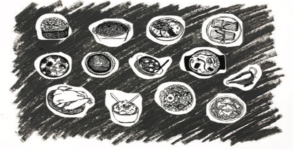It is said that imitation is the highest form of flattery. When it comes to imitating native cultures however, perhaps this phrase needs to be rewritten.
On Nov.7 Victoria’s Secret held a fashion show in New York where one outfit in particular stood out for all the wrong reasons.
Karlie Kloss strutted down the runway with all the confidence in the world wearing a leopard print bikini, layers of turquoise jewelry; fringe covered heels, and a headdress. Reactions were probably not what Victoria’s Secret had intended. While it could be argued that Kloss’ Victoria’s Secret Outfit outfit, like all the others on the runway, was a celebration of the female body, we believe that it is utterly disrespectful on a number of levels.
Kloss’ “native” garb is insensitive to the troubled history that follows the indigenous people of America. It is a collection of stereotypical items that are considered native, and portrays native women as “easy,” which is highly problematic in itself because native women face the highest percentage of rape in the country according to The New York Times.
This fashion disaster comes on the heels of the terribly advised Paul Frank “Dream Catchin’” party in September where guests were invited to put on brightly colored feather headbands, and choose props like miniature bows and arrows and tomahawks for a mock photo shoot. The company proudly posted over 1,000 images to their Facebook page until they received a backlash of negative comments.
Does anyone remember the kerfuffle at Urban Outfitters last year over their Navajo inspired collection? In the summer of 2011, Urban Outfitters introduced a new line of accessories that included everything from feathered earrings to flasks with Navajo patterns on them. We are not sure what they were thinking about that last one.
Native inspired fashion has been sparking controversy for a very long time and we don’t see any way for it to continue without being offensive. Even if a company does tons of research in order to avoid outrage, it is inappropriate to make a profit off of someone’s culture, especially when they are still facing so many hardships today.
Among the comments surrounding all three incidents are a few people who feel that Native Americans are being too sensitive and need to “get over it,” adding that there are more important things for them to worry about.
We think Native Americans are not overreacting about the “fashion” choices companies are making, and have every right to raise their voices in protest when their culture is put on display for the public to buy. Sacred images and symbols are transformed into something that has the tendency to fade out and only survives based on popular trends.
It is upsetting whenever people wear headdresses or paint their faces because they likely have no idea what these things mean or how deeply rooted in culture and history they are. To them, it is simply a fashion choice.
Native Americans have a rich and diverse culture that deserves to be celebrated, but fashion isn’t the best way for outsiders to show their appreciation. One way to get an inside look at native culture is to attend an event put on by local tribes. This month there are lectures, art exhibits, film screenings, and community gatherings all across the Bay Area that are open to everyone, native or not. We need to make a conscious effort to learn the histories and cultures of the Native people in our communities, because a nation of people is more than a headdress and some fringe.


